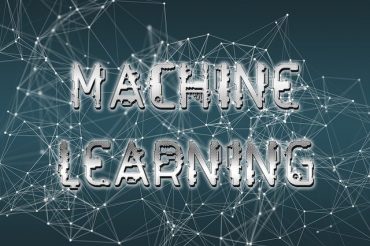
The key to digital transformation success is to address issues related to customer orientation, business models, and technology.
Let’s start by defining “Digital Transformation.” If we do not have an agreed upon definition, we certainly will not agree upon how to overcome the obstacles! But, agreement on this definition is not so simple. A web search for the definition of Digital Transformation will find thousands of sites offering their definitions – and as you would expect, they are not all the same. Some definitions are technical and simple – using digital technology, mobile, etc. Others include digital technology and business model changes. The one I like is from the Agile Elephant:
“The process of shifting your organization from a legacy approach to new ways of working and thinking using digital, social, mobile, and emerging technologies. It involves a change in leadership, different thinking, the encouragement of innovation and new business models, incorporating digitization of assets and an increased use of technology to improve the experience of your organization’s employees, customers, suppliers, partners, and stakeholders.”
In addition to the technology and business model aspects, this definition includes, in my opinion, the critical aspect that differentiates digital transformation – an audience-centric (i.e., customer, partner, employee) perspective.
Using this definition, I provide my thoughts on the key obstacles for each area: customer orientation, business models, and technology.
Obstacle 1 – Perspective
Historically businesses focused on the offerings they brought to market – my products, my services. In some cases, this alone is what a client wants, but maybe it is only a part of the desired customer solution. For example, Banks offer a variety of accounts, loans, credit cards, financial advice, etc. Sometimes a customer is just coming to the Bank to open an account. But other times, opening an account or obtaining a loan is part of a larger customer-centric scenario – moving to a new home, buying a car, or sending a child away to college. Delivering on the client perspective and not just supplying the company offerings is the digital transformation differentiator.
Switching perspectives from “provider-focused” to “consumer-focused” is this first major obstacle. Continuing the Banking example… “We provide bank accounts – here is all the information about each account type so you can figure out which one is the best fit for what you need” puts the burden on the consumer to build their solution from parts provided by possibly many separate businesses rather than providing a consumer scenario oriented complete offering. Certainly, banking or other industries do the work to understand customer needs within a ‘user journey’ and build their offerings appropriately to meet these needs. But frequently following the market opportunity work that helps define the offering, the go-to-market sales approach for the offering loses this context and solely provides a set of offered products and services. Some companies do better with industry- or scenario-based solutions that tailor a recommended set of their offerings. But when a customer solution reaches outside the company’s own product set (see next obstacle), this is far less often the case. And, the more feature-rich (read – complicated) your offerings are, the more likely it is that your market offering is provider-centric.
Further supporting this obstacle are the IT systems that are used to manage the offerings we bring to market. Systems of record handle customers (CRM), accounts, orders, products, logistics, etc. Each system is built to provide information related to its purpose. These systems provide general capabilities that can be used across multiple consumer context scenarios, which are not necessarily a bad thing. These provide reusable capabilities for our business across scenarios, but they do not help move us toward a consumer orientation.
How do we overcome this obstacle? The first step and perhaps most difficult is to obtain agreement at the corporate level that this is an obstacle we want to overcome. The company leadership needs to agree with what it means to become a digital business. They also must agree that they want to act upon this digital transformation initiative and change behavior across many aspects of the business to address the opportunity. Simply making a digital transformation assignment to the IT organization is not going to work.
This is less about changing the products or offerings themselves (although this might be necessary in some cases) and more about how you present your offerings to the consumer. Your sellers, your web site, your mobile App, should all be able to show consumer use cases that drive to offerings, not solely describe each offering standalone without consumer context. As you grow to include assets from other companies in your offerings or you become part of another company’s offering, this consumer orientation enables seamless behavior across the ecosystem.
From a technology perspective, Business APIs have become a common mechanism to provide a consumer orientation on top of the existing enterprise systems of record assets that have the reusable provider orientation. We cannot and should not try to change our entire set of systems of record that are running our business. Creating a system of engagement in front of the existing systems of record allows us to map a consumer orientation on these systems and enables rapid time to market and increased market reach – the goals of digital transformation.
Obstacle 2 – Ecosystem
As mentioned in the first obstacle, we may need to create an ecosystem to provide complete consumer-oriented solutions. Ecosystem creation is about creating a “win-win-win” scenario for the customer, your business, and your ecosystem partners. Consumers win through acquisition of a complete and simple to consume offering. Your business and the additional ecosystem businesses win through increasing revenue opportunities and improving customer satisfaction. This is about finding the right business models to enable this “win-win-win” situation.
In my blog, “Creating A Digital Ecosystem – Past, Present, and Future” I describe the scenario in more detail, I will recap the key points here in the context of being an Obstacle to Digital Transformation.
Historically this was simply called “partnering.” Businesses established a relationship, including financial arrangements and technical integration to establish a partnership. Following a business level agreement, an IT organization exposed selected interfaces for the new partner to use. The secure access, visible scope, and technical on-boarding was a multi-week effort to supply the interface to the partner IT organization, explain the parameters, test, and ensure the integration was implemented successfully. Considering the time and effort involved in each partner on-boarding, the number of partners was usually limited.
This simply is not scalable. Investopedia describes Business ecosystems as a network of organizations that may cross many industries. If our business is to drive significant value from a digital transformation, the number of interactions in this channel and the number of partners driving the interactions need to be able to increase at a rapid pace. Individual lengthy on-boarding of partners will not suffice.
Today we can handle the technical integration aspects via API management solutions to enable rapid on-boarding of many partners. We still need to complete the business arrangement first, and this remains a “one at a time” process. But, once the business agreement is complete, we can provide access to our API developer portal containing pre-tested consumer-oriented APIs that can be self-service consumed by the partner organization. This allows for far more rapid on-boarding of partners and expansion of our ecosystem.
While API solutions are a way to do this, they are not the only way. Other capabilities such as events, blockchain, or more traditional integration capabilities may also come into play. Blockchain, in particular, can be a powerful tool to pull together an ecosystem working across multiple participants potentially from multiple industries and geographies to provide client-oriented ecosystem solutions.
Is this scalable enough? Maybe. But the one-at-a-time on-boarding at the business level may still be too slow. Predicting the future (always dangerous) I describe how we might be able to address more rapidly establishing the business relationship part of the ecosystem creation through API Marketplaces and/or other techniques.
Obstacle 3 – Integration
Technology is a key part of all the definitions of Digital Transformation. In the Agile Elephant definition there are several references to the use of technology: “using digital, social, mobile and emerging technologies,” “the encouragement of innovation,” and “incorporating digitization of assets and an increased use of technology” are all parts of this specific definition.

In the prior sections, I have already mentioned APIs and Blockchain as two potential supporting technologies for Digital Transformation, but there are many others. Let’s focus on three specific technology areas that many companies are using/exploring to assist in their transformation:
- Cloud: Companies are using cloud for many reasons – cost, agility, flexibility, etc. Most companies have on-premises IT systems, which may be traditional IT-managed or managed in a private cloud paradigm. They also have or are moving toward using cloud providers, and SaaS hosted solutions. This is resulting in a hybrid cloud and multi-cloud situation for many IT infrastructures.
- Microservice Architecture: Two primary benefits gained from microservices are application agility and enabling the flexibility to move to the cloud. But, in addition, scalability and innovation are also key benefits.
- Artificial Intelligence: Using AI to assist in customer-centric solutions is a natural fit. It enables a better understanding of the client perspective and can help in understanding customer intent, customizing a response, and communicating solutions to the customer in a natural way.
These technologies, plus others, are enablers for digital transformation. However, the result of using these technologies is that there are many components in multiple locations that all need to work together to provide the solution. Multiple and hybrid clouds distribute work across multiple geographic locations. Microservice architectures increase the number of application components. AI solutions are frequently accessed using third-party solutions (e.g., IBMs Watson). Add to this that you are working in an ecosystem potentially with many partners who are also implementing these technologies and the reality of a huge obstacle starts to appear – Integration.
Analysts concur. Gartner states, “Integration has become an obstacle to success because traditional, centralized and systematic integration approaches cannot cope with the volume and pace of business innovation.” 1
IDC also recognized “Connectivity” as the number one issue in their FutureScape Worldwide CIO agenda stating, “By 2021, driven by LoB needs, 70% of CIOs will deliver “agile connectivity” via APIs and architectures that interconnect digital solutions from cloud vendors, system developers, startups, and others.” 2.
Overcoming this obstacle, as the prior obstacles, requires a change in behavior. Historically integration tasks were handled by a centralized, highly skilled team. Attempting to scale this team to meet all the required integration needs is simply not going to work. We would need too many highly skilled people. And, without this, we would have a bottleneck waiting for central IT to handle all the integration requests for our projects. We need to address this using “agile integration” techniques that simplify most integration tasks and allow for a distributed team approach to many integration needs. Yes, some complex integration is still required and will be done centrally. But the simpler majority must be offloaded to non-integration specialists.
Additionally, several integration styles are required. Integration between microservices in a Kubernetes cluster can be done within the cluster (and simplified and further improved using a Service Mesh such as Istio) but APIs are typically used to integrate between microservice clusters. Looking at integration needs solely within your business, other styles of integration you will see include: handling events (becoming very popular with Kafka), simplified integrations executed by application developers or even business developers perhaps using SaaS applications, complex integrations to non-standard back-end systems by highly skilled specialists, transactional messaging, and yes, even files. Expanding this to a view across our ecosystem, we also need APIs, events, and files, but also add integrating to blockchain, and perhaps EDI or other legacy integration styles. Limiting styles of integration can limit your ability to serve the client and requiring all capabilities to change to a single integration style within the enterprise or across the ecosystem is unrealistic.
Finally, we need to consider where we can secure and execute our integration functions. Funneling all integration execution to a single integration structure either on-premises or in a cloud can cause unnecessary delays in response time. It does not make sense to force a transaction that starts in the cloud to come on-premises to then go back out to the same or another cloud. We also need to be able to secure the transactions as they enter and throughout the transaction and scale the integration tasks as needed. As businesses continue their digital transformations adding more capabilities in more locations, the ability to execute integration tasks anywhere – on-premises and on any/all vendor clouds is a critical success factor.
Digital transformation is not easy, but the benefits are tremendous. According to MarketsandMarkets, “the global digital transformation market size is expected to grow from USD 290.0 billion in 2018 to USD 665.0 billion by 2023, at a CAGR of 18.1% during the forecast period.” To overcome the obstacles discussed, there is one additional thing that is required – commitment. Digital transformation is not a project that is executed once and then done. Corporate level commitment, including a commitment to creating and enabling targeted leadership roles and responsibilities, education, process changes, and support for the initiative is required to become a digital business.
1 Gartner-Modernizing Integration Strategies and Infrastructure Primer for 2018
2 IDC FutureScape: Worldwide CIO Agenda



























